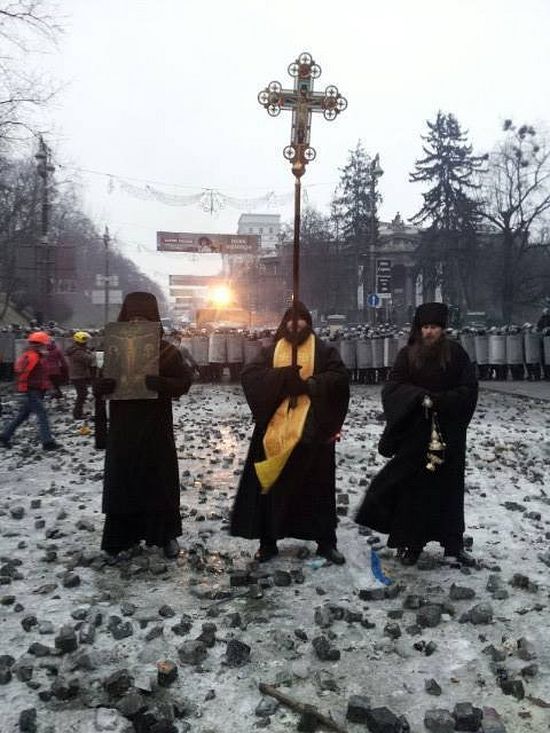 For newcomers in liturgical theology Fr. Alexander Schmemann is a figure that everyone comes into contact with eventually. For many, he is the figure which opened the door to liturgical theology in the first place. For many in the field, the conversation around him is a given and so rarely are there opportunities to pause the conversation and help bring students up-to-speed with who Fr. Schmemann was, and even rarer how people have continued to interact with his work.
For newcomers in liturgical theology Fr. Alexander Schmemann is a figure that everyone comes into contact with eventually. For many, he is the figure which opened the door to liturgical theology in the first place. For many in the field, the conversation around him is a given and so rarely are there opportunities to pause the conversation and help bring students up-to-speed with who Fr. Schmemann was, and even rarer how people have continued to interact with his work.
I myself, as a young liturgical theologian, encountered many instances in which people talked about the controversies surrounding Schmemann and his errors but never took the time to explain what those controversies were or what Schmemann’s errors were.
As we continue our ongoing series examining We Give our Thanks to Thee I am particularly grateful for the contribution of Eugene Schlesinger. His essay offers the newcomer a crash course in the controversy and conversation. Gene offers a helpful overview of the methodological approach Schmemann took in his work, not through the rose-colored lenses of idealism but in light of a careful reading of Schmemann, his errors and his critics; yet emerges with a vision of Schmemann as an essential voice with continued importance in the development of liturgical theology moving forward.
It highlights two of the essential areas of controversy. Schmemann’s association with resourcement and the historical errors he assimilated in some of his reconstructions, and secondly his critical relationship with the scholasticism of the west. These evaluations are primarily helpful in helping readers understand the criticisms leveled against Fr. Schmemann; but Dr. Schlesinger offers a few of his own perspectives and apologetics as well.
The essay is a blast to read and gives ample fodder for the student of liturgical theology to dig into. Here are a few of my take aways from the chapter.
- Gene highlights the Bi-directional impact of both liturgy and theology on one another. First the theology of the liturgy, and then the theology from the liturgy. Neither of these function in a vacuum and any effort that seeks to prioritize liturgy over theology of vice-versa will run afoul quickly. The theologian is not a tabula rasa.
- I particularly Dr. Schlesinger’s insight that this dynamic cross-pollination is even an ever-present reality in the subjects’ experience of the primary theology experienced within the liturgy as the individual encounter’s God within a contextual framework of meaning predicated on both the law of prayer and the law of belief within their own lives.
- Schlesinger is quick to inform the reader of Schmemann’s dependence of the historical data of his day on the liturgy, much of which has been proven misguided, incomplete or simply false in recent years. This does force us to read Schmemann with a critical eye on any of the arguments based on particular historical evidence. I did appreciate that Gene recognized that Fr. Schmemann was not primarily concerned with preserving the “shape of the liturgy” as imagined by Gregory Dix but was more interested in pursuing fidelity to the heart of Orthodox liturgy that become entangled by later accretions in the east. I would perhaps go even further and mention that Schmemann was far from a man who sought some golden age of liturgical purity, but was a thoroughly pastoral figure who was willing to engage in the occasional iconoclasm of tradition in order to return the church to a liturgical kerygma in the world (see our last installment).
- The historian might take issue with Schmemann but I don’t think much energy should be spent there. History purity was not Schmemann’s project and his errors, although important to note, do not enervate his message, which was empowering the liturgy as the location of God’s “divine initiative,” of self-communication in the world.
- Schlesinger is critical of Schmemann’s approach to the scholastics. This is a helpful section and offers a compelling apologetic for engaging in the scholastics in the modern age.
- Schlesinger reminds us that although the scholastics were often mystics themselves that wrote not from a purely intellectual lens but were indeed transformed by the Theologica Prima of a living encounter with God.
- Eugene also reminds us that the conversations around validity that took up so much space in the liturgical writings of the scholastics in no way are meant to place boundaries on the fullness that the sacraments are able to provide. Scholasticism does not prevent a more polyvalent appreciation of the sacramental symbols, actions and rites. Gene offers a compelling argument that scholasticism should not be abandoned, but rather redeemed.
- A large part of the essay offers an apologetic for the development of the term transubstantiation in the teaching of the western Church. This is a very helpful bit of writing but perhaps misses the point of Schmemann’s critique. Schmemann was less about the doctrinal formulas of the church, but in fact, was a response to the very real impact of the misunderstanding of those doctrines in the life of the Church in both the east and the west. Providing spiritual and historical context to the scholastic is essential, but If it does not take seriously the dangers of misusing the scholastics it will be unable to foster the healing of the wounds inflicted by centuries of abuse. It is only after repenting of the sins of scholasticism that we can seek to redeem it.
The primary critique I would offer to this article is that it operates under the stated assumption that “any engagement with the liturgy is always conditioned by ‘secondary’ theological reflection.” This statement is perhaps the very kind of unnuanced assumption that generated the critical approach that Schmemann himself took in his work. It is the kind of statement that is true in every way, except perhaps the most essential way. It forgets the hesychastic root of eastern Christian spirituality that is neither apophatic nor cataphatic but awareness and embrace.
Schmemann cared little for efforts to recover the pristine standard ordo against which our rubrics might be weighed and measured. Instead he saw liturgy as the location in which the church participates in the I and thou knowing of God’s own self in the first-person plural. What we do with that communal encounter necessarily ecclesially and semantically complex.
I am grateful for Dr. Schlesinger’s helpful survey of the weeds and his generous approach that gives us space to navigate Schmemann with both academic honesty and theological enrichment.











